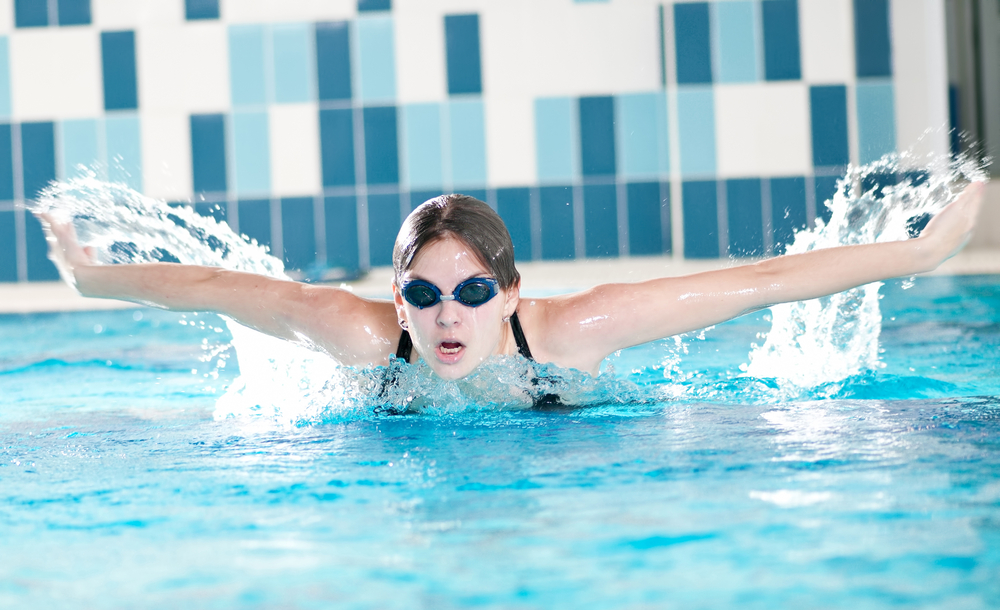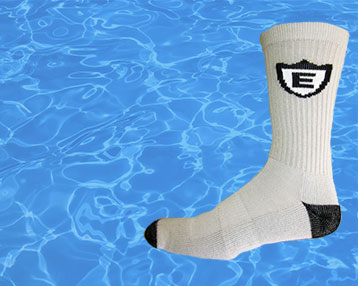
Improving Swimmer’s Breathing Technique
Breathing is an essential element of swimming. Some people believe that you should hold your breath while underwater, but what you should do is learn how to control your breath. As you practice the proper breathing techniques for swimming, you can improve your lung capacity and overall performance. In this post, coaches and swimmers alike can learn how to breathe while swimming.
Key Areas to Focus on While Breathing During Swimming
When you are going about your normal day, you don’t have to give breathing a second thought. It is completely natural. Once you’ve spent some time swimming, breathing will become just as easy. When you are just getting started in the season, focus on:
- Creating a continuous cycle. The most important swimming breathing technique to remember is to breathe in and breathe out. Exhaling should take place the entire time your face is in the water. You should inhale the entire time your face is clear of the water. Some competitive swimmers try to hold their breath while submerged and then inhale and exhale while their face is out of the water. Holding your breath will cause you to tire quickly, and breath-holding can actually lead to a loss of consciousness. You’ll know that you’re exhaling correctly if you see a constant stream of bubbles as you push air out through your nose and mouth. Focus on those bubbles until you come up to take your next inhale.
- Practicing your body’s rotation. Once you begin swimming laps, you’ll need to work creating a seamless movement that supports your breathing technique. As you swim freestyle, your body will rotate in the water. Do not pick up your head. Instead, allow it to turn to the surface with the rest of your body. As your stroke comes together, the movement will begin to feel more natural.
- Single-side and bilateral breathing. During freestyle, there are two approaches to breathing while swimming: single-side and bilateral. Single-side breathing means choosing either your left or side and breathing only on that side. Bilateral breathing means you alternate between your two sides. Both approaches have their benefits. Choose which one works best for you and focus on that technique.
Breathing Tips for Each Type of Swim Stroke
The proper swimming breathing technique is basically the same for each stroke. You need to maintain that continuous cycle, but picking up the skill is a little different for each stroke.
- Freestyle. Whether you opt for single-side or bilateral breathing while swimming freestyle, remember to focus on proper movement of your head. Many beginning swimmers overcompensate and try to push their head entirely clear of the water. Instead, allow your head to turn naturally just enough to clear your mouth and nose from the water.
- Breaststroke. While swimming breaststroke, you do not have to worry about turning your head to breathe. Instead, your head will be held straight as you dip above and below the surface of the water. As you propel your body forward, you will naturally lift out of the water. Allow your mouth and nose to clear the water, then inhale. Exhale slowly when your face is underwater.
- Butterfly. The butterfly involves coordinating a continuous dolphin kick with powerful overhead arm circles. While the movement is challenging, the breathing technique is straightforward. Just like with breaststroke, the movement of this stroke will propel your face above the surface of the water. At this point, inhale. Fully exhale while your face is submerged.
- Backstroke. Proper breathing in swimming is often easiest during backstroke. Your face will not be in the water, but it is still helpful to create a breathing rhythm. Connect your breath with the movement of your arms. Inhale as one arm arcs up and back. Exhale as it pulls back toward your body under the water. Repeat the inhale and exhale cycle as the opposite arm moves. This technique will help you control your movements and ensure you aren’t breathing too rapidly as you move through the water.
Tips & Drills for Practicing Breathing Techniques
Swimming breathing drills can start out simple and progress as you get used to the process.
- Get comfortable first. Before you try to put an entire stroke together, get comfortable with the breathing process. Stand in the water. Bob up and down, taking your head beneath the water. When you go under, exhale so you see a steady stream of bubbles. Then, break the surface and inhale. Repeat the process until the process feels smooth and easy. You can also introduce kicking to your process. Hold on to the edge of the pool with both hands and gently kick until your body is horizontal. Practice placing your face in the water and creating the proper breathing cycle.
- Use flippers. If you want to think less about your kick, put on a pair of flippers. Swim fins will make it easier to move through the water. You can worry less about the propulsion power of your kick and more about how you are breathing. You can also pair flippers with a kick board.
Once you feel like you have the hang of breathing, you can put aside the equipment and start swimming laps.
Conclusion – Team Towels
Ultimately, these techniques will instill swimmers with skills that will help them long after they leave the pool at the end of the season. We provide custom swim team towels so that coaches and parents alike can reinforce their commitment to bettering the lives of their athletes and gift them with enduring mementos of their hard work and success.

